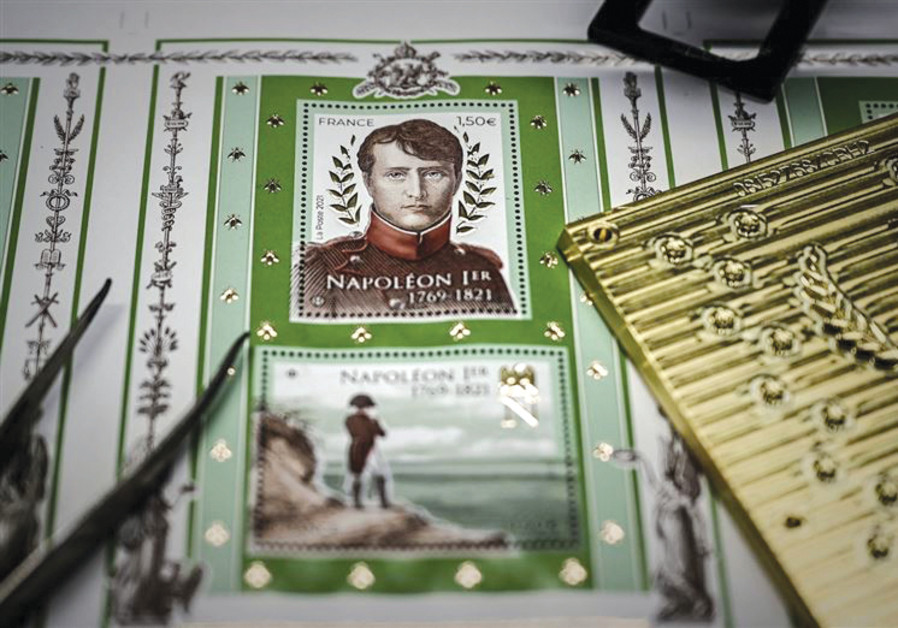The Weider-Hapgood-Forshufvud hypothesis is based on Forshufvud’s analysis of five of Napoléon’s hairs. Lab reports disclosed arsenic levels ranging from normal to 38 times greater than average. This purportedly proved that Napoléon was administered minute amounts of arsenic in different concentrations at different times for five years prior to his death.
Napoleon himself fueled suspicion, writing in his will a mere three weeks before his demise at age 51, “I die before my time, murdered by the English oligarchy and its assassin.”
The murder theory gained traction over time, backed up by advances in forensic science. A self-described Napoléon nut – make that scholar – in 1995 Weider followed up the splash of the first book with an expanded study of the same subject, Assassination at St. Helena Revisited, which he co-penned with Forshufvud.
BRIEFLY, IN October 1815, Napoléon was exiled to the remote British-held island of Saint Helena, in the South Atlantic Ocean 1,776 km from the coast of West Africa. He died there aged 51. Napoléon had previously been deported to a more genial exile on the Italian island of Elba but escaped from his prison there, regrouped la Grande Armée, and tried again to conquer Europe. He was defeated by a coalition of British and Prussian soldiers at Waterloo in 1812.

While Napoléon’s wine was produced at the Domaine de Groot Constantia in today’s South Africa, Weider et al suggested the marquis tampered with the vintage before serving it.
They had compelling reason to implicate the nobleman in the homicide. While Montholon’s military service would provide a cover for him to join Napoléon in the Emperor’s final exile, their scrutiny of his military service revealed several falsehoods.
Montholon claimed he had won a sword of honor in Napoléon’s smashing victory at the Battle of Hohenlinden, 33 kilometers east of Munich on December 3, 1800. In fact, the marquis had no part in the campaign, as he was facing expulsion from the army for corruption at the time. He was reintegrated into the army thanks to influential friends and family.
Nine years later, at the Battle of Jena, Montholon claimed to be wounded. But his commanding officer swore in a later affidavit that the event did not happen. And then during Napoléon’s first exile in 1814, Montholon lost his commission under the Royalists after only seven days, after he was charged with pocketing money meant to pay his troops in Clermont-Ferrand.
While Montholon was an unscrupulous character, and while arsenic in Napoléon’s hair seems suspicious, it should be noted that the poison was popularly used in the 19th century for various purposes.
With France and Britain unable to agree on a protocol for burying Napoléon in France, he was initially laid to rest on St. Helena, after an inconclusive autopsy. In 1840, he was disinterred, and his very-well preserved remains were repatriated to Paris to be entombed at the newly-constructed Dome des Invalides.
Here too there may be a scientific explanation for the well-preserved state of his body that suggests murder. Arsenic is well-known for keeping a corpse in good condition. However, Napoléon was buried in four hermetically sealed coffins. Another explanation is that the phenomenon of saponification (whereby the flesh is transformed into adipocere) was advanced by the absence of oxygen.
In a 1993 interview with The Jerusalem Report, Weider dismissed as apocryphal the story that Napoléon suffered a final indignity beyond his humiliation at Waterloo. According to the unsubstantiated rumor, a vengeful doctor cut off the French emperor’s penis during an 1821 autopsy performed on the rock-bound prison. Weider denied the missing manhood story.
“It’s absolute rubbish.”
The autopsy was performed under a military guard, he explained. No one reported that any body part was missing.
Nevertheless, Dr. John K. Lattimer, a urologist, purchased the purported amputated appendage from a collector in 1977 for $3,000. It is currently owned by his daughter who has been offered more than 30 times that sum for it.
It is unlikely that the cause of Napoléon’s death will ever be definitively known. And barring a DNA comparison between Dr. Lattimer’s gruesome souvenir and the body at Les Invalides, the question will remain unanswered: was Napoléon’s legacy gilded or gelded?
